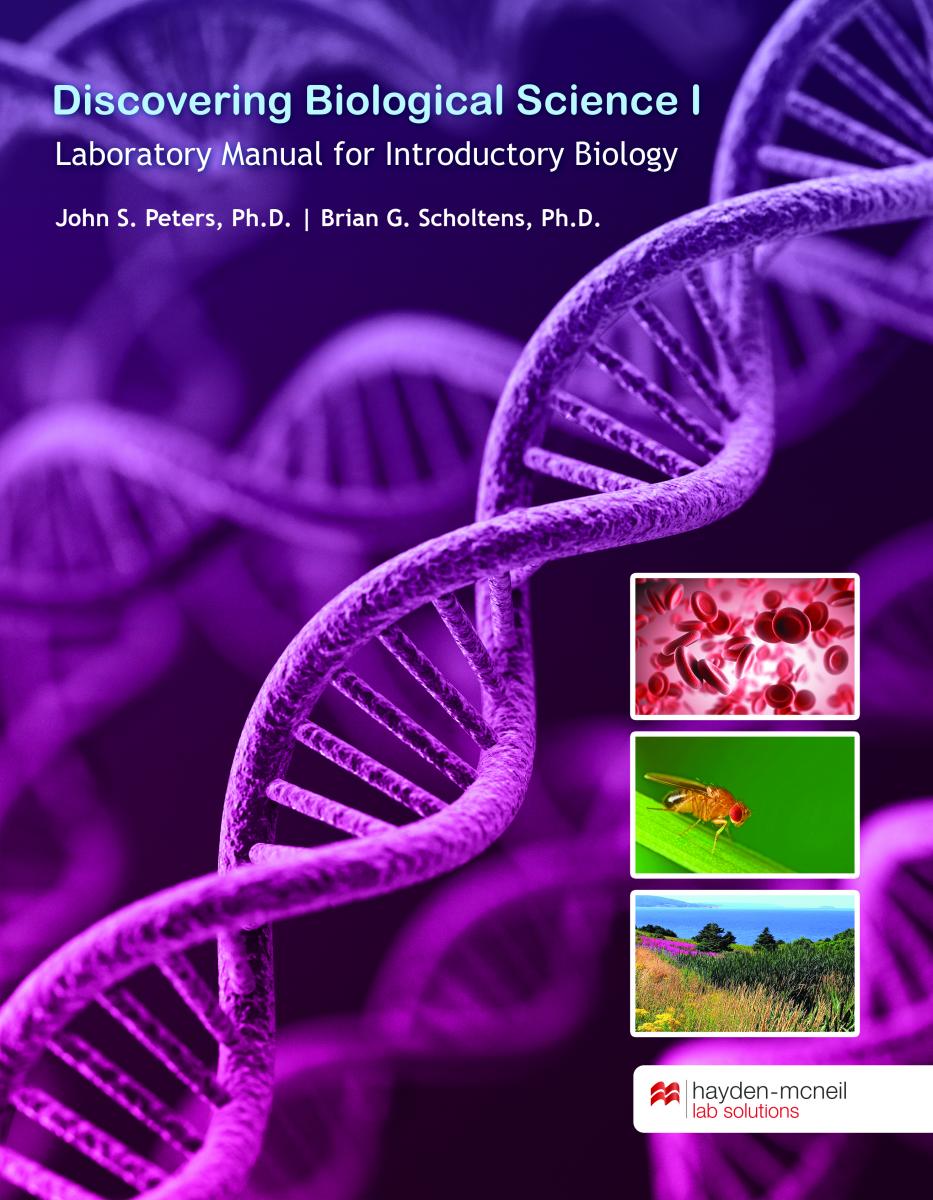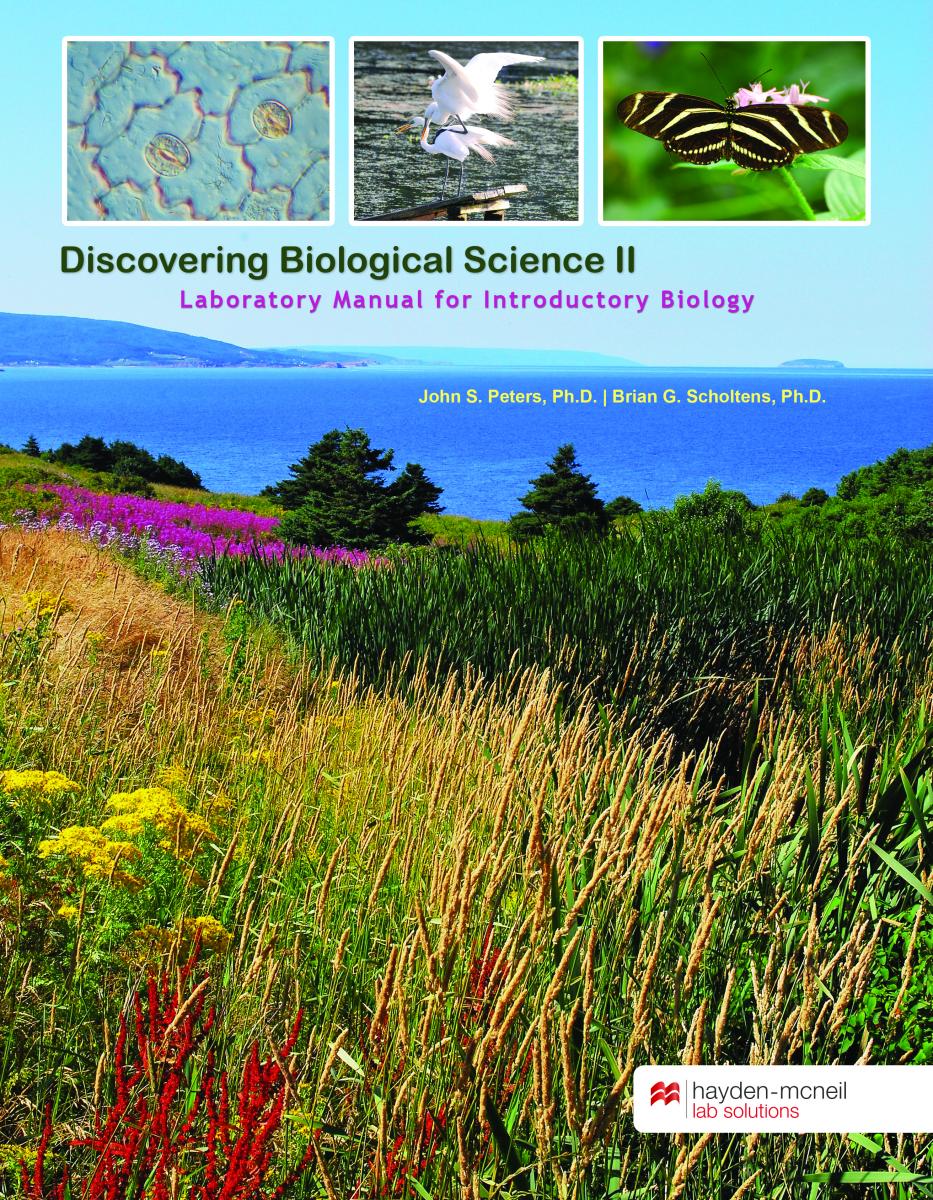What are inquiry-based labs, and how are they different from more traditional lab experiences?
Traditionally, the context for introductory biology labs is the exploration of a biological concept (metabolism, cell division, etc.), which from the student’s perspective can be quite abstract. In inquiry-based labs, it is instead observations and questions, which are sometimes centered on issues that are relevant to students’ personal or civic lives, that initiate and set the context for lab exploration. This is because research in science education has revealed that students are more engaged in their own learning when there is an initial context centered on student interests and experiences. In inquiry-based labs, students also practice making critical decisions about hypotheses, predictions, and the design and execution of the experiment. This “student-centered” focus—rather than solely a “concept-centered” focus—fosters deeper student interest and investment in the outcomes, and helps students to more fully appreciate the creative aspects of science and understand how design decisions can influence the validity of their findings.
The Discovering Biological Science labs, developed by Dr. John Peters and Dr. Brian Scholtens, weave together a series of labs that explore important introductory biology concepts while providing students with experiences that lead them to understand and appreciate the collaborative, creative, and dynamic nature of science. There are two different introductory biology lab manuals that can be adopted as is, or instructors can select individual labs for building a customized lab solution. The series of inquiry-based biology labs are suitable for both major and non-major courses and are available for preview and adoption through Hayden-McNeil of Macmillan Learning.
Here are the two manuals including the list of specific inquiry-based lab experiments available:
Discovering Biological Science 1 Lab Manual Experiments

- Termite Trails: Exploring Scientific Inquiry—This lab sets the tone for the student-directed and inquiry-based nature of the lab experience. Students observe termite behaviors and then pose hypotheses explaining an observation and then design an experiment to test their hypothesis. The lab reveals students conceptions of scientific exploration and provides explicit feedback and opportunities to refine their conceptions.
- What’s Alive?—This case-based “practicing-inquiry” lab challenges students’ conceptions of what it means to be alive. Students then design and conduct and experiment to test for signs of metabolism in something which students are unsure as to whether or not it is alive.
-
Exploring Osmosis and Diffusion—This case-based lab begins by exposing students to people who died from hyponatremia (excessive water consumption) and has students testing hypotheses about water and solute movement across simulated cell membranes (dialysis tubing) to understand and devise proper treatments for a person experiencing hyponatremia.
- Exploring Plant Metabolism—Students going outside to explore the interrelations between photosynthesis and cellular respiration in the leaves of plants by exploring the uptake/release of CO2.
- Exploring Metabolic Diversity in Plants: Independent Team Projects—This multi-week lab has students proposing, designing, conducting, writing, and presenting a scientific research project related to factors they hypothesize may influence plant metabolism.
- Exploring the Genetics of Eye Color in Fruit Flies (Drosophila melanogaster)—This multi-week guided-inquiry has students establish fly cultures, conduct crosses and extract eye pigments to test hypotheses about the genetics and molecular biology of how eye color determined in fruit flies.
- Lost in Timbuktu: A Case Study-based Inquiry—This case-based inquiry has students using genetic concepts and simulated DNA profiling to resolve a dispute among three couples whose children were potentially placed with the wrong family after birth. A biology major’s version of the lab has students simulating the DNA profiling analysis using plasmid DNA. The non-major’s version uses scientific stains and dyes to simulate the DNA profiling analysis.
-
Discovering the Genetics and Molecular Biology of Sickle Cell Anemia—In this case study-based lab, students explore the genetics/molecular biology of sickle cell anemia and its relationship to the evolution of resistance to malaria. Students use two kinds of simulated protein electrophoresis (Native PAGE & SDS PAGE) to test hypotheses about the nature of the mutation inherited by individuals in the case. The final assignment for this lab has students writing a stakeholder letter that requires them to apply molecular, genetic and evolutionary knowledge to educate, and provide assistance in helping an African couple (known to be a carrier for sickle cell anemia) decide on whether or not to have a child.
Discovering Biological Science 2 Lab Manual Experiments

- Darwinian Snails— This lab uses the popular SimBio® Darwinian Snails computer simulation software which challenges, dispels and helps students to reform common misconceptions about how natural selection operates. The student instructions for this lab have been modified in DBS I to make this exploration more inquiry-based.
- Exploring the Evolutionary Genetics of Sickle Cell Anemia— This uses the popular SimBio® Sickle Cell Alleles computer simulation software. The lab contextualizes abstract evolutionary genetics concepts to a classic case of how malaria influences the prevalence of sickle-cell anemia in humans. The student instructions for this lab have been modified in DBS I to make this exploration more inquiry-based.
- Adaptations: Thermoregulation in Butterflies— This lab has students constructing models of butterflies to test alternative hypotheses regarding thermoregulatory adaptations.
- Exploring Water and Nutrient Transport in Plants— Students test their own hypothesis about how environmental factors might affect transpiration rate in stem/leaf cuttings.
- Exploring Animal Circulation 1— This lab had students initially making careful observations of mammalian heart structure. Student then pose hypotheses about heart how the heart pumps blood, which they then test by measuring the heart’s electrical activity (EKG); heart sounds and pressure during the heart cycle.
- Exploring Animal Circulation 2— This second part of the Animal Circulation lab has students using computer-based dissections to explore circulation in several vertebrate groups.
- Exploring a Scientific Journal Article— This lab helps students develop the skills necessary to interpret and evaluate a scientific paper, which will, in turn, guide them in generating their own relevant biological questions.
- Independent Team Projects Labs— This lab has teams honing their scientific process skills by conceiving of, developing, and executing an investigation of their own design. Compared to the independent projects lab we developed in DBS I, this lab affords students more flexibility in terms of the topic they are interested in exploring as students can explore questions related to prior lab explorations
- Exploring Human Overpopulation and Environmental Sustainability— This lab begins with a case study in which the issue of human overpopulation of the planet is presented as a myth. After initially reflecting on their views students calculate their current and future ecological footprint and discuss its implications for sustainability.
- Exploring the Salt Marsh Ecosystem— This field-based lab takes students out into a salt marsh ecosystem to explore the biological diversity and physical factors that characterize the marsh ecosystem, and to discover the essential ecosystem services of provided by the marsh ecosystem.
- SimPredator-Prey: Exploring the Ecology of Invasive Species— Species- This case study-based lab begins at a public hearing in which several proposals are being put forth by various stakeholders to control the spread of this invasive species of fish. The case then leads students to explore the effect of an invasive species and the implications of using biocontrol agents through a fun, hands-on predator-prey simulation.
-
Exploring Keystone Species— Adapted from the SimBio® Keystone Predator simulation, the lab begins with a case study exploring the environmental effects of 70 years of efforts to eradicate Grey wolves from North America. Although the lab explores ecological drivers of community structure in a simulated rocky intertidal community, students use the findings from the lab to understand how and why wolf reintroduction impacted the Yellowstone ecosystem.
About the Authors:
John Peters (MS – College of Charleston - Marine Biology; Ph.D. – University of Northern Colorado – Biological Education) and Brian Scholtens (MS/Ph.D. – University of Michigan - Entomology) currently teach in the Department of Biology at the College of Charleston. There they coordinate the introductory biology labs and teach undergraduate and graduate courses in biology. The implementation of the Discovering Biological Science curriculum at the College of Charleston was supported by grants from the National Science Foundation (NSF) and the Howard Hughes Medical Institutes (HHMI).
To learn more about these inquiry-based biology labs, please click on the “contact us” link and complete the form. A Hayden-McNeil representative will be in touch to discuss your unique program needs.
See a sampling of Biology Content available for your custom project
Sample Custom Solutions:
- Custom Lab Manuals
- Custom Textbooks
- Dissection Guides
- Online Courses
- Course Websites
- Digital Interactives and Learning Objects
